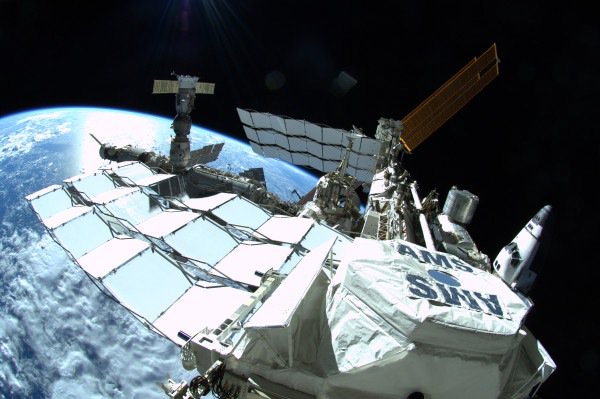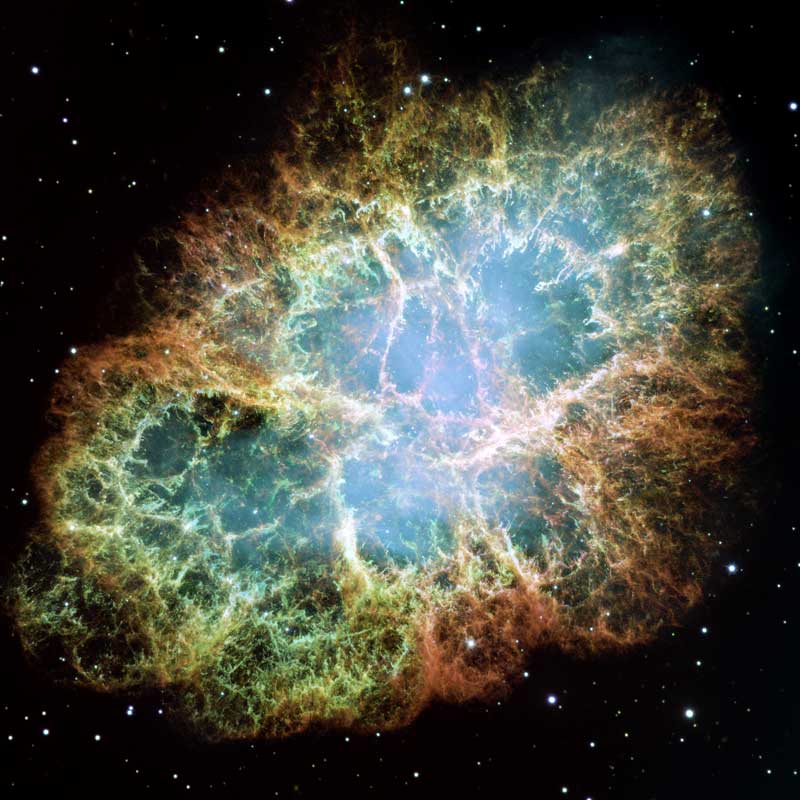I want to tell you a short story about #DarkMatter and how the search for it sometimes leads us to beautiful and surprising things. (thread)
One of the ways we look for (invisible) dark matter is through "self-annihilation." Idea is: when two dark matter particles love each other very much, they might (with some small probability) annihilate and create stuff we can see.
We haven't (yet) found conclusive evidence for dark matter annihilation. But we're searching! The main way to search is to try to find weird signals of light or cosmic rays that are hard to explain with what we know of astrophysics.
The AMS-02 experiment, a cosmic ray detector attached to the Space Station, is looking for cosmic rays from dark matter annihilation (or other things). (Image: NASA) 

The AMS-02 experiment has seen some weird stuff. There seems to be more high-energy antimatter out there than we thought there should be. More positrons (antimatter-electrons) and more antiprotons! Maybe produced by dark matter annihilation??
But there are other things that can make positrons. Pulsars (rapidly spinning, highly magnetized neutron stars) can do it. So extra positrons aren't a smoking gun. (Animated pulsar beam gif: NASA)
As for antiprotons, pulsars can't make those. But, it turns out something else can: supernova remnants. Basically, the shredded remains of long-exploded stars leak antiprotons all over the place. (Image: NASA/STScI) 

For a few years, it's been suggested that a supernova (or a few) about 3 million years ago, at a distance of about 350 light years, could explain the antiprotons.
BUT THERE'S MORE
BUT THERE'S MORE
We ALSO have evidence for a supernova about that time and distance from a totally different source: MUCK AT THE BOTTOM OF THE OCEAN
Weird levels of a particular isotope of iron (60Fe) have been found in seafloor sediment in a way that suggests that there was a supernova a few million years ago, a few hundred light years away, that was powerful enough to drop stuff on Earth.
To sum up: searching for dark matter seems to have accidentally shown us evidence of an ancient supernova that ALSO seems to have dusted Earth with radiation a couple million years in the past, and we know this because we PUT DETECTORS IN SPACE AND ALSO DUG UP THE OCEAN FLOOR
SCIENCE IS REALLY COOL, PEOPLE.
That's all I wanted to say, thank you for listening.
Here's a link to a technical paper about this if you want: arxiv.org/abs/1710.02321
That's all I wanted to say, thank you for listening.
Here's a link to a technical paper about this if you want: arxiv.org/abs/1710.02321
(Somehow I accidentally broke the thread at this point, so here is the Twitter Moments version, for those stuck on the cliffhanger: twitter.com/i/moments/9948…)
• • •
Missing some Tweet in this thread? You can try to
force a refresh





